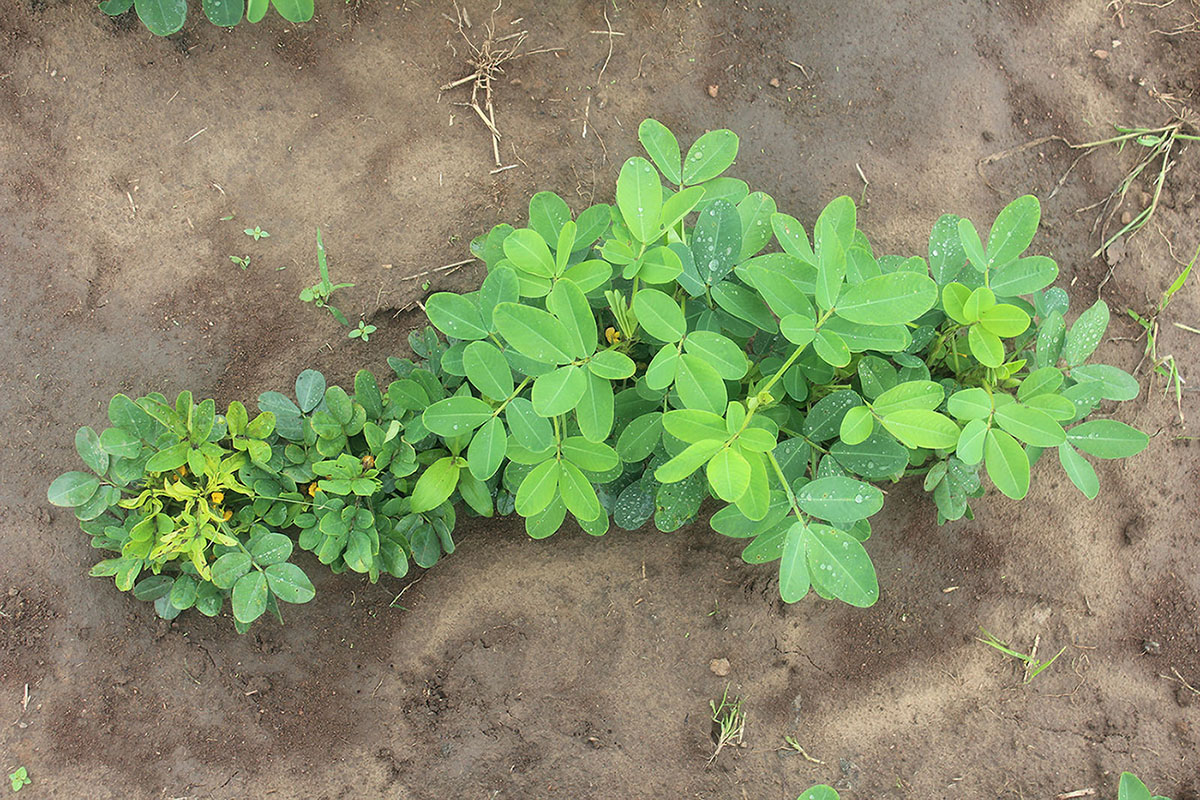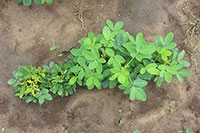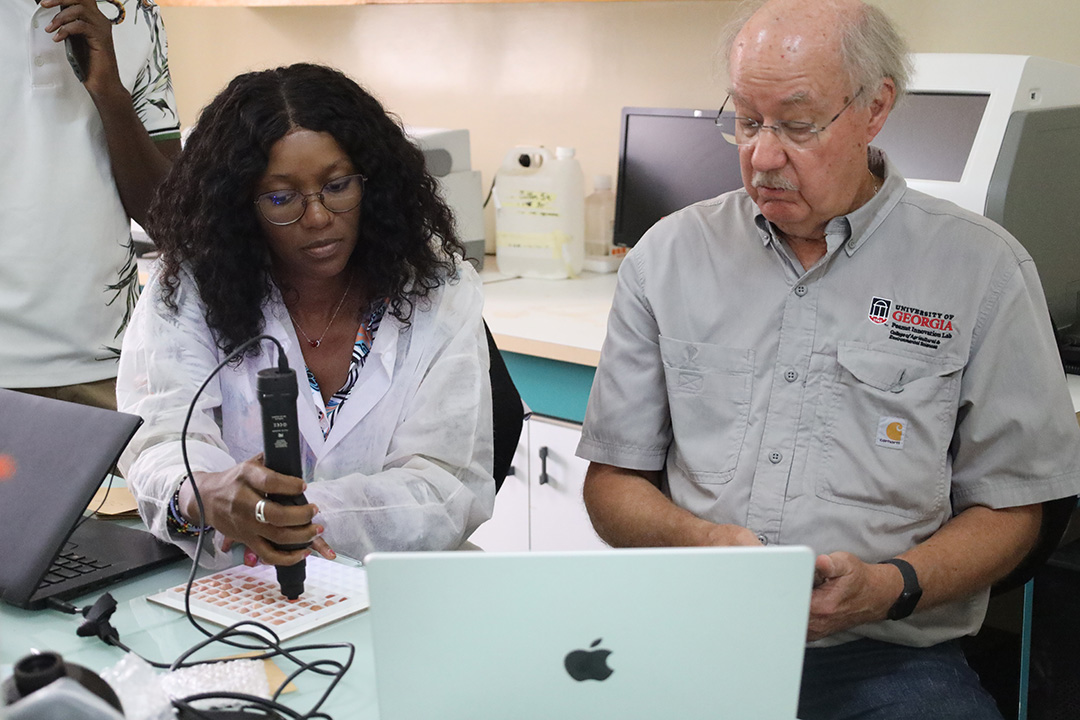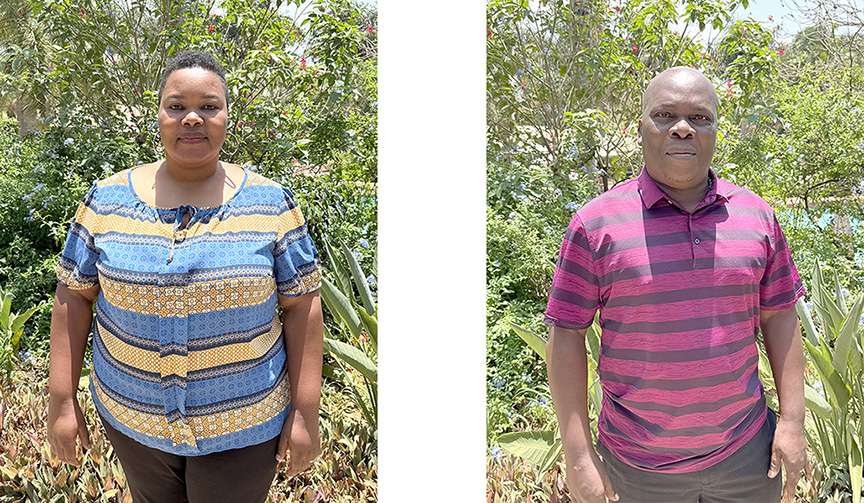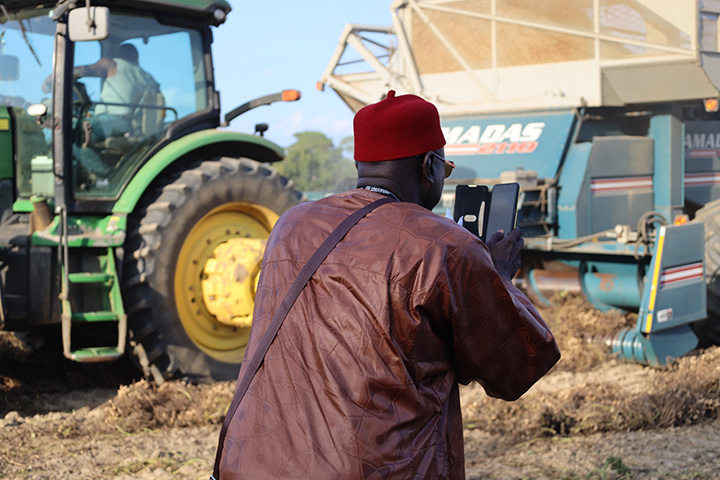A group of researchers has identified where within peanut’s genome the resistance to Groundnut Rosette Disease (GRD) lies, which will enable targeted plant breeding to give farmers a variety that can withstand the disease. By finding the major locus controlling GRD resistance and validating that locus as suitable for marker-assisted selection, the team achieved an historic accomplishment in 2021 in the fight against the most destructive peanut disease in Africa.
The Feed the Future Innovation Lab for Peanut is working on several fronts to fight GRD, a disease that is caused by a complex of viruses spread by aphids in sub-Saharan Africa. The disease is worst in tropical climates and can cause 40-100% yield reduction; there are no effective treatments for the disease and spraying to control the aphids that transmit the disease involves pesticides that are costly and toxic to the environment. Knowing the genes and having markers for these will help breeders more easily incorporate resistance into new varieties and provide farmers protection in the best way possible – in the seed.
Another Innovation Lab project is looking for the alternative hosts of the viruses – the plants that harbor them during the off-season – as a way to control the spread. This project has already identified four likely hosts and is in the process of confirming their ability to transmit the disease to groundnut. Once confirmed, knowing what plants harbor the virus overwinter will allow farmers another way to reduce the spread of the disease in their fields, by removing the alternate hosts.
To locate the resistance genes, the Innovation Lab project led by Josh Clevenger of Hudson Alpha, Mapping Groundnut Rosette Disease (GRD) resistance for marker-assisted selection, was able to benefit from other Innovation Lab projects that had collected hundreds of peanut lines from across the continent and genotyped using modern molecular tools to assess the genetic diversity of the collection. The results were used to identify a core set of 300 lines that seem the most valuable for breeding and research.
By determining which of the 300 lines were resistance to GRD, scientists were able to quickly identify where the genes for resistance were located. Breeders have already started to cross the GRD-resistant varieties with other varieties that are high oleic, high yielding and have other desirable qualities.
Since the identification of the disease more than 100 years ago and the identification of resistant germplasm in the 1980s, this is the very first time there have been a genetic locus identified to be used for breeding.
With the USAID network and the breeding resources through Intertek, the markers – once validated – will be made available to all breeders. All they have to do is send leaf or seed chips, and they will get genotypes back for their lines telling them which lines contain the genes for resistance.

